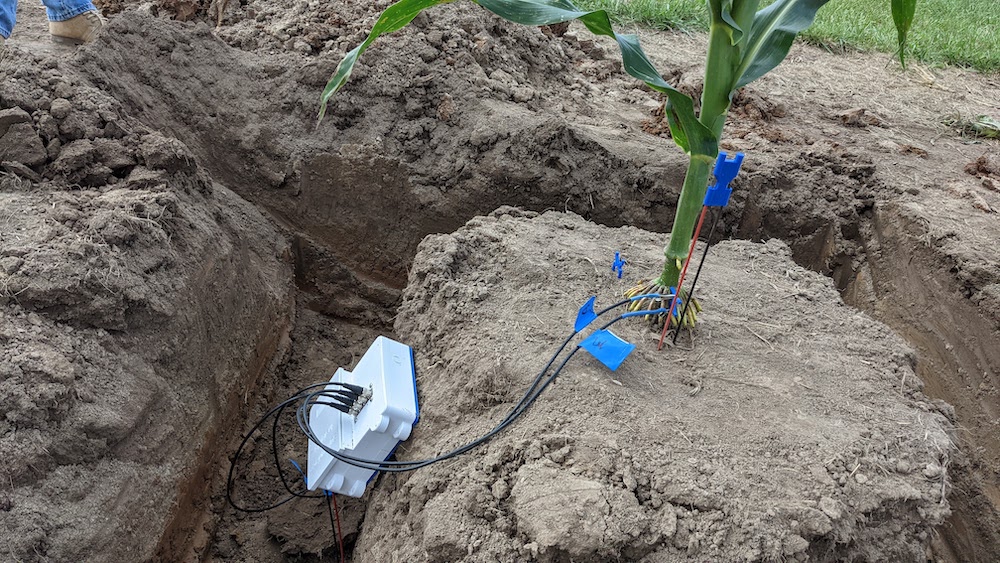For crops or houseplants, shrubs or grasses, the early-warning signs of stress from drought or any other stressor are out of sight, out of mind in the last place anyone ever looks: underground in the plant’s hidden half, or its roots. Still, there’s not yet a way to inspect these roots without digging a plant up and tearing its hidden half to pieces, destroying the plant.
Now Berkeley Lab scientists have developed a new sensing technology to assess crops by “seeing” into the soil while keeping a plant’s roots intact. Tomographic Electrical Rhizosphere Imager (TERI) placed first this month in a Bayer Crop Science Grants4Tech competition that evaluated how novel sensing devices can collect key root trait data, including mass, length, and diameter of important agriculture crops, such as corn and soybean, in the field without disturbing the plant.
TERI, a project supported by the Department of Energy’s ARPA-E Rhizosphere Observations Optimizing Terrestrial Sequestration (ROOTS) program, functions by sending a small electrical current into the plant stem. The current then travels throughout the root system to non-invasively sense the electrical response of both roots and soil and provide information on these root characteristics. Solutions like TERI are attractive to agricultural companies because they offer the chance to track root growth and health over time to understand how plants adapt to environmental stressors, which can influence crop yield and resilience to a changing climate.
The Berkeley Lab staff scientist, Yuxin Wu, who led development of TERI said, “Imagine if we could measure these root traits without destroying a plant. That could help us to rethink plant cultivation from an entirely new angle, using an approach based on new knowledge of plant roots rather than merely above-ground traits such as its leaves or cross-pollination characteristics.”
TERI is a product of the EcoSENSE suite of novel-sensing technologies and capabilities developed at Berkeley Lab to explore plant-soil-microbe interactions across scales.
